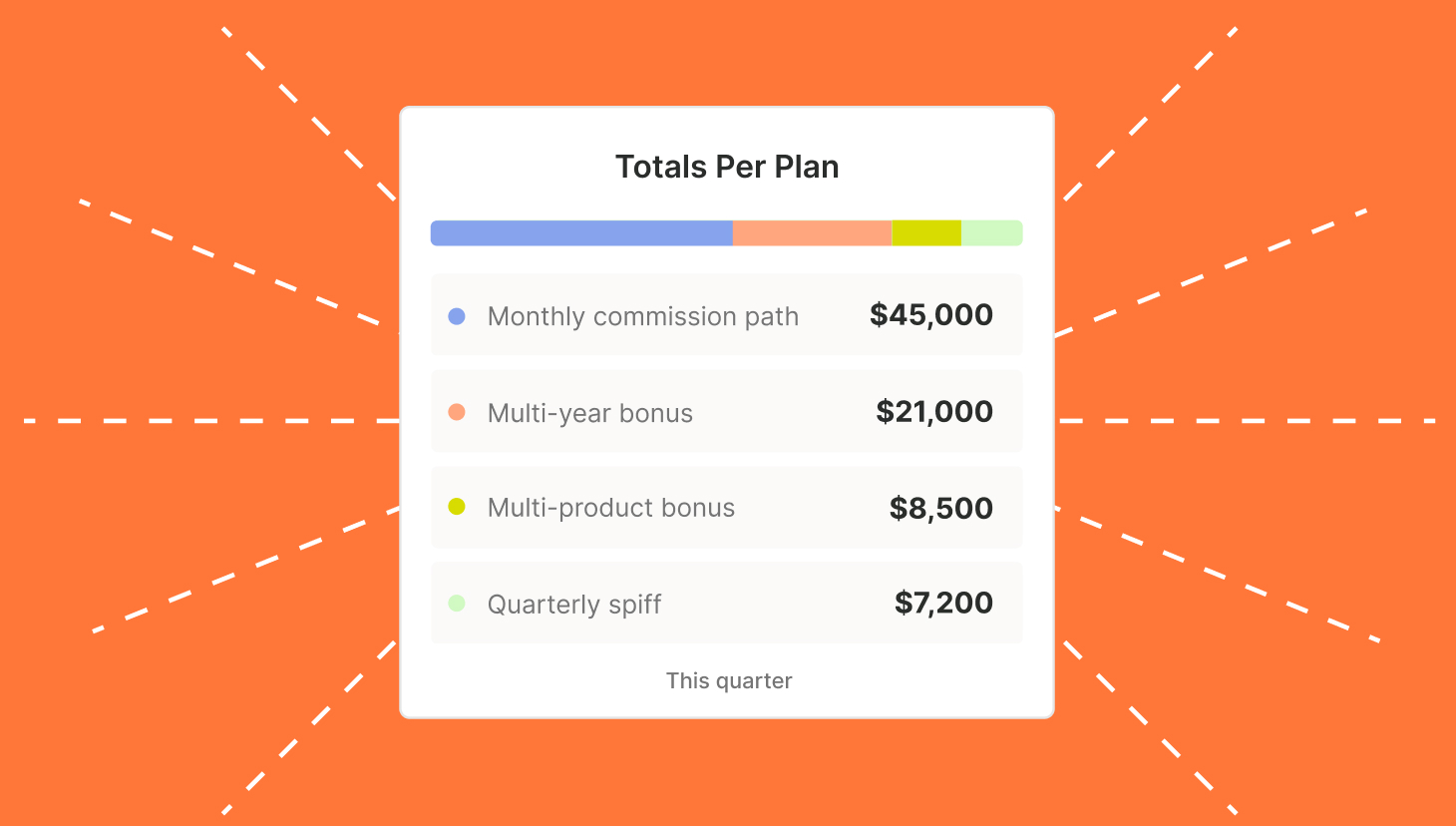Some careers, like becoming a doctor or advancing to chief resident, are fairly predictable. There’s a route that must be followed to get from medical student to respected surgeon. But for other careers, like software sales, there are a multitude of ways to get where you want to go.
There’s no standard career path for sales. But here’s an example of how many people interested in the top role achieve their goal.
Try QuotaPath for free
Try the most collaborative solution to manage, track and payout variable compensation. Calculate commissions and pay your team accurately, and on time.
Start TrialFirst, a quick definition:
What is software sales?
People outside the sales industry may think of software sales as a single type of position, but it’s actually an entire category of sales. Think about how pharmaceutical sales reps focus on medications and medical devices and insurance reps sell policies. Those in software sales are totally focused on technology. This is a particularly exciting niche that promises a lot of growth. After all, society’s love for and reliance on technology is only increasing. The market is strong, and that means lots of potential for job opportunities and career growth over time.
Software sales encompasses all the types of sales jobs you’d find in other industries. Many people start by nabbing an entry-level position at a company that specializes in software sales. They gain valuable experience and learn about core products while on the job. In the meantime, they’re proving themselves to management. In time, they’ll have a chance to work their way up the ladder.
First role: Sales Development Representatives (SDR)
Tenure: 1-2 years
Sales Development Representatives* are a type of sales rep completely focused on prospecting. Old-school sales setups saw reps tackling every part of the sales process. That can mean lower overhead thanks to a more slim-lined sales team. But today, many organizations separate their sales staff into specific roles so that everyone has a shortlist of targeted tasks to accomplish.
SDR’s key task is setting meetings for closers. They don’t do the actual closing, though. Instead, SDRs take lead lists from the marketing team, qualify prospects and then pass warm leads onto the Account Executives in charge of closing.
*In some organizations, SDRs are referred to as Business Development Representatives (BDRs) or Market Development Representatives (MDRs).
Second role: Account Executive (AE)
Tenure: 2-5 years
Account Executives, also known as Sales Executives, are the people in charge of the day-to-day interactions with clients. This includes developing and maintaining a relationship with the decision-makers at client organizations. AEs or SEs need to know everything about their clients’ companies, including:
- Their objectives
- Their end products/services
- Their end customer’s pain points
- What they have in development
Part of the Account Executive role is turning those warm leads from SDRs into actual contracts. Execs may present demos, negotiate terms and arrange the actual close. It’s the AE’s job to know what problems could crop up and what it might take to overcome those objections. They also need to know how to field questions about product features, what certain products or packages cost and the availability of upgrades.
Sales Executives often receive compensation packages that include a smaller base salary plus incentive compensation. Some roles may be entirely commission-based, meaning take-home pay depends on the ability to close a deal.
Third role: Sales Manager
Tenure: 3-8 years
Sales Managers are essential team supervisors. They manage a group of salespeople, fostering a positive environment that motivates employees to usher prospects through the sales funnel. Becoming a Sales Manager takes time, but it also takes experience. SMs are expected to know everything about the sales cycle, but they also take care of administrative duties such as:
- Setting sales goals
- Determining individual and group sales quotas
- Analyzing sales data
- Conducting training
- Evaluating and coaching sales rep/Account Execs
- Determining pricing for special promotions and discount programs
- Addressing customer complaints
Sales Managers may also be involved in hiring and firing and divvying up sales territories. It’s the Sales Manager’s job to keep the team on target and make customers happy. They’ll do whatever’s necessary to offer a superior experience and get and/or keep clients on board.
Note: just because you’re a top performing AE doesn’t mean you’ll be a great Sales Manager, nor should it! It’s always acceptable to be a top AE as a permanent career.
Fourth role: Sales Leader
Tenure: To be determined (potentially unlimited)
Sales Leaders (VP of Sales, CRO, Sales Director, etc.) are the visionaries in the world of software or SaaS sales. Sales Leaders are often confused with managers. To help keep the roles straight, think of managers as the people who direct employees. Leaders develop those managers. Sales Leaders create the organization’s sales strategy, crafting a blueprint that will take the team through the quarter or even the entire year.
Sales Leaders are also mentors. They find ways to empower SDRs, Account Executives and even Sales Managers. Excellent Sales Leaders are able to balance working with the executive team and their sales team. They concentrate on working with team members to develop their skills, improve their pitches and so on.
Some Sales Leaders may even join the team during big pushes and pitch clients themselves. It’s not uncommon for supervisors in software sales to join their AEs when approaching a “big fish” customer. It’s a good way to model a well-developed skill set like the “perfect” demo. But it also boosts morale to see the boss right there in the trenches getting their hands dirty (so to speak).
There is some overlap between Sales Managers and Sales Leaders. Some organizations choose to combine the roles for that very reason. But keeping the positions separate means more opportunities for the team to learn and grow. Managers and Leaders with clearly defined job descriptions can provide support and amplify growth in different ways. That’s how you help create a stronger, more agile organization from the top down.
Starting your software sales journey
If you’re looking for a software sales job and aren’t sure where to start, the answer depends on your personal experience and skills. For many people just getting their feet wet in sales, an entry-level job as an SDR is an ideal introduction. They’ll learn about sales cycles (and software sales in particular) while actually taking a hands-on role. Those who have already proven themselves in other sales niches may jump right to an AE or even management position.
Your trajectory depends on you. Still, software sales are booming. Now’s a great time to reach out to recruiters and see how you can excel in a promising field.
Already in sales and looking for a better way to tackle daily tasks like commission tracking? QuotaPath makes it easy for reps to see what they’re earning, turning the concept of quotas into metrics that actually make sense. Sign up for a custom workplace today and start for free.



